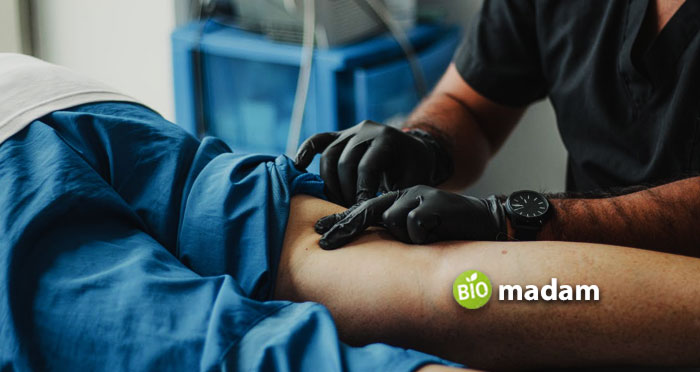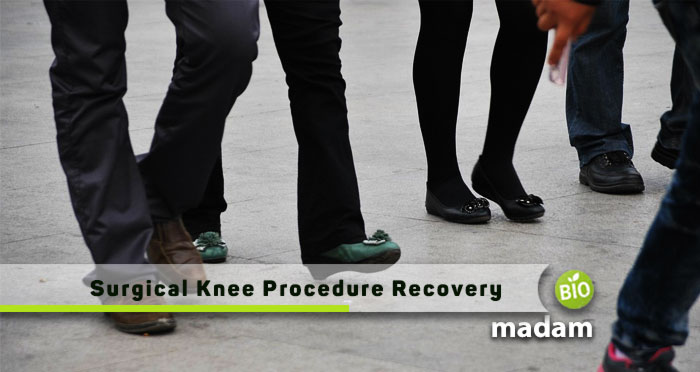Knee surgery is a very common procedure. Over 600,000 knee surgeries are performed in the United States each year. The most common reason for knee surgery is to repair a torn meniscus. Some people also get knee surgeries for rheumatoid arthritis or osteoporosis. Most people who have knee surgery will have a full recovery. However, the recovery period can be different for everyone. It is essential to follow the instructions of your doctor and physical therapist to ensure a successful outcome. Here are some tips on how to properly recover from a surgical knee procedure:
1. Follow Your Doctor’s Orders
It is essential to follow the instructions of your doctor and physical therapist to ensure a successful outcome. Doctors are experts in their field and know what is best for you. It is important to listen to their instructions on what you need to do and follow them closely. This will help you recover quickly and without any complications.
Physical therapists also know what is best for you when recovering from surgery. They will design a rehabilitation program specifically for you that will help you return to your previous level of function. It is essential to stick with the program, even if it is difficult at times.
2. Rest and Ice Your Knee
Your doctor will likely tell you to stay off your feet as much as possible for the first few days after surgery. This is because too much activity can cause bleeding and swelling. You may need help from family or friends to do basic tasks such as bathing, cooking, and cleaning. If you have a job, ask your boss if you can work from home for a while until you’re feeling better.

One of the best ways to reduce swelling and pain is to ice your knee for 20-30 minutes at a time, several times a day. You can use a bag of frozen peas or corn wrapped in a towel or buy an ice pack designed explicitly for injuries. Make sure to put a thin cloth between the ice and your skin to avoid frostbite.
3. Take Your Medications as Prescribed
After surgery, you will be prescribed pain medication and, in some cases, antibiotics. Taking these medications as directed to help your pain and prevent infection is essential.
The pain medication will likely be a narcotic such as oxycodone or hydrocodone. These drugs can be addictive, so taking them only as prescribed is essential. Be sure to follow the instructions on how often to take the medication and never take more than the recommended dosage.
If you have any side effects from the medication, such as nausea or drowsiness, be sure to tell your doctor. They may be able to prescribe a different medication that doesn’t have the same side effects.
4. Use Compression and Elevation
In addition to icing your knee, you can also use compression and elevation to reduce swelling. Compression means wrapping your knee in an elastic bandage or compression sleeve. This will help support your knee and reduce the amount of fluid that builds up in the area.
It is also vital to continue elevating your leg above heart level whenever possible. This will help reduce the swelling in your knee by allowing gravity to pull the fluid away from the area. Try lying down on your back with your leg propped up on pillows or sitting in a recliner with your leg elevated.
5. Physical Therapy
You will likely need to go to physical therapy after surgery to help you regain strength and range of motion in your knee. Your therapist will develop a plan specifically for you based on the type of surgery you had and your individual needs. The program will likely include exercises to improve your range of motion, flexibility, and strength.
You may need to attend physical therapy several times a week for a few weeks or months. You may also be shown how to use crutches or a cane if you need them properly. The therapist may also give you exercises to do at home. It is essential to follow your physical therapist’s instructions carefully and attend all your scheduled appointments.

6. Return to Your Normal Activities Gradually
You will probably be able to return to your normal activities and sports gradually over time. Your doctor will let you know when it is safe to start up again and may give you specific activity guidelines. But it’s essential to take it slow at first and not overdo it. Start with gentle activities such as walking or swimming and gradually increase the intensity as your knee strengthens.
Stop the activity and contact your doctor if you experience pain, swelling, or other problems. They may need to adjust your rehabilitation program or medication. It’s also essential to wear the right shoes and use any devices your doctor has recommended, such as a cane or knee brace.
It’s important to remember that surgery is just the first step in your recovery. There is no magic cure for a damaged knee. It will take time, patience, and hard work to get back to your usual self. But with the proper care and rehabilitation, you can make a full recovery and get back to doing the things you love.

Hi, they call me Jenna, and I am also known for achieving a gold medal during my Ph.D. in science life. I always had a dream to educate people through my utmost writing hobby. So, I chose this blogging path, and Biomadam gave me this opportunity to present for them. I now stand to entertain you. Continue reading my articles & discuss if you’ve any confusion through the comment section below.

